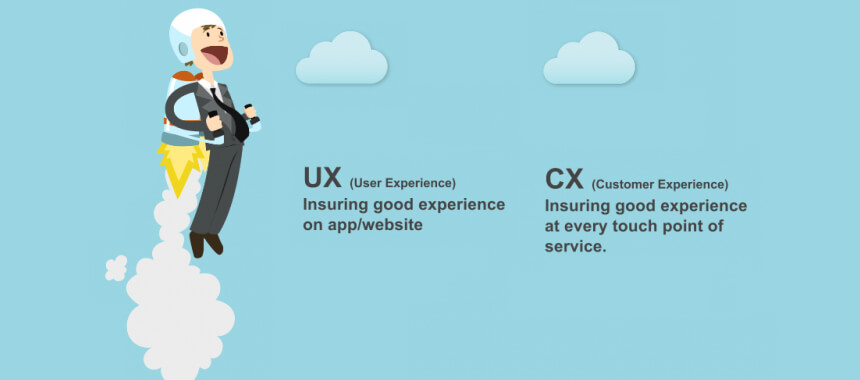When we talk about the weather and the climate, we usually misinterpret one for the other. Similarly, you’ve probably heard UX and CX and how they’re the key to your company’s success. Yet, most people aren’t clear about the difference between each concept.
There are many buzzwords thrown around now and then in the customer sphere. Still, two of the big ones link to experiences—customer and user.
Most of us think that only one of them is worth investing in or both are the same thing. To determine the benefits of each of them and conclude the difference between them, it is essential to get an overview of them and find out why and how they benefit enterprises. Why waste resources on something irrelevant?
Let’s explore each field’s nuances and how a better understanding of CX makes you a much stronger UX designer.

What is User Experience (UX)?
UX is vital for anything digital. Good user experience is all about enabling customers with the ability to find information quickly and easily. UX is the end-users’ perception while communicating with your product or service. It is specific to your product, i.e., website software, or app.
UX aims to make sure that the brand designs products that solve the right problem efficiently and enjoyably.
The designs of your product’s interface, usability, visual hierarchy, navigation, etc., collate to create a user experience that is either positive or negative for the users.
UX is designing products that are intuitive, enjoyable, and easy to use. UX is measured with metrics that revolve around your app, software, or website’s functionality and usability, like:
- Success Rate
- Error Rate
- Abandonment Rate
- Clicks to Completion
- Task Time
What is Customer Experience (CX)?
CX, on the other hand, is a broader concept involving all aspects of the enterprise. It is the user’s experience when they interact with your brand and not just a specific product.
It is about the customer’s experience as a whole. It envelopes the customer’s total experience and involves assessing the customer’s perception of the enterprises’ brand value, customer service, marketing strategies, prices, products, etc.
CX aims to align business plans with the actual customer’s overall experience, with the customer’s satisfaction in mind.
CX interactions happen across multiple touch points, like, advertising, marketing materials, social media channels, sales process, and customer service.
The objective of a CX designer is to increase the overall customer satisfaction and increase the likeliness of the customer to repeat interactions and transactions with the brand to gain better sales and revenue. CX is measured with metrics like:
- Loyalty
- Overall Satisfaction
- Net Promoter Score (NPS)
What is the cumulative impact!
Like there is a connection between companies and users, there is an indefinite connection between UX and CX. They are two recognized disciplines that work towards the same business goal.
UX is a subset of CX. UX is the experience your customers have with your product. In contrast, customer experience is the experience those users have with your brand as a whole.
Customer experience is the brand differentiator whereas user experience is an influential element of the overall CX.
The foundation of a good CX is, in fact, a good UX. Neither one of them is more important as experiences than the other. What is essential is the approach towards a customer-first strategy across all touch points and prioritizing customer interaction. Although the two disciplines (UX & CX) don’t merge, they collaborate while identifying their differences.



